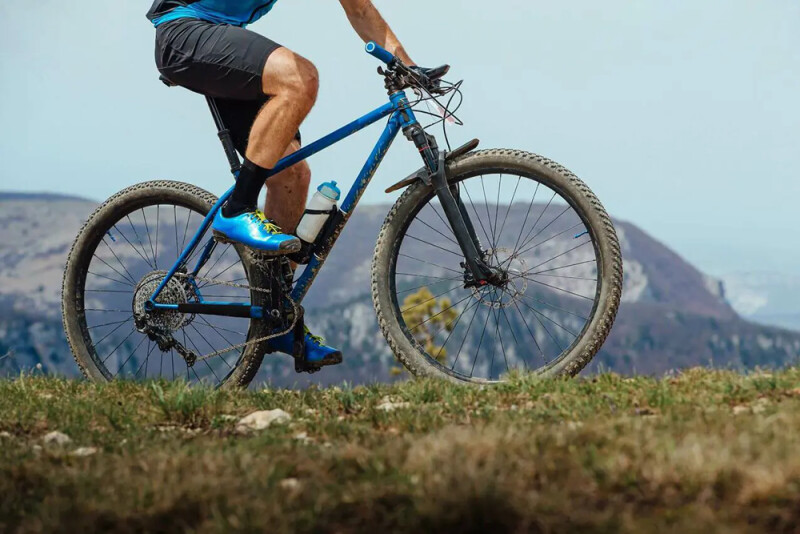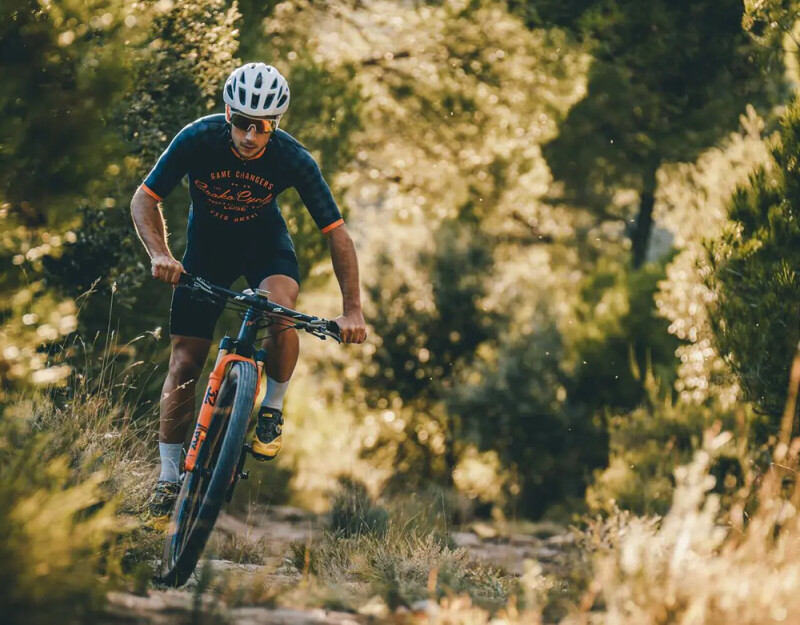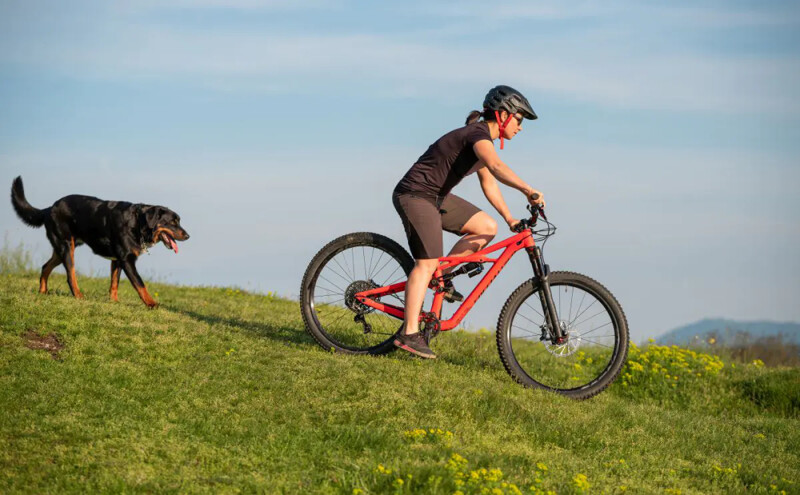Siroko (Spain) - When it comes to cross-country mountain bikes, choosing between a hardtail or a full suspension one depends on several factors. The first one would be our budget and preferences, followed by the type of terrain you usually ride on, and finally your experience and riding style. Now, before we dive into the advantages and disadvantages of these two different types of MTB bikes, we’ll give you a brief introduction to both.
A hardtail mountain bike features a frame with no rear suspension, so it relies on its front suspension to dampen any impacts due to irregular terrain, as well as to guarantee comfort and control while riding.
A full suspension mountain bike features both front and rear suspension systems. This shock-absorption on the back allows for a more comfortable and smooth riding experience. It also improves wheel traction on challenging and irregular terrains, which provides better control and stability.
Now, let’s take a look at the pros and cons of these two types of MTB:
Hardtail – Pros:
Efficiency: Generally speaking, hardtail bikes guarantee a better performance when it comes to riding on smooth terrains and rough climbs, thanks to the lack of rear suspension and how light they are as a result. The power transfer is also more straightforward, which helps the cyclist reach higher speeds and save energy.
Weight: Within the same price range, hardtail bikes are considerably lighter than full suspension ones.
Faster on climbs and smooth terrain: Thanks to their light weight and efficiency, hardtail bikes are perfect for climbing and riding on easy tracks.
Maintenance: Hardtail bikes usually require less maintenance since they have fewer moving components, which makes them easier and cheaper to repair.
Price: For the most part, hardtail bikes are more affordable than full suspension bikes, given their simpler design. Plus, as we mentioned in the previous point, maintenance is usually easier and consequently cheaper.
Improved riding technique: On rough and difficult terrain, a hardtail bike is more demanding for the cyclist than a full suspension one. This gives you a debatable advantage, as it can motivate you to improve your skills or, on the contrary, it can be discouraging and frustrating.
Hardtail – Cons:
Less comfort on irregular terrains: The lack of rear suspension can render the riding experience a bit uncomfortable on rocky, technical or irregular terrains, as the shock-absorption won’t be effective enough.
Less traction and control on descents: Since they have no rear suspension to dampen the impacts and keep traction on rough terrains, hardtail bikes don’t guarantee control and stability on fast and challenging descents.
Less shock-absorption: Another disadvantage of having no rear suspension is that it makes landing after jumps difficult, as it stops the bike from buffering the impact properly.
Less general comfort during a ride: Since there is no rear suspension, shock-absorption depends on the wheels, the whole frame and the saddle. If you suffer from back pain, a hardtail bike is not recommended.
Fewer adjustment options: With a hardtail bike, the only option you have is to either make modifications on the suspension tuning or change the whole suspension system entirely.
Full suspension – Pros:
Comfort and control: Bike’s rear suspension in this option is ideal for shock-absorption, guaranteeing a more comfortable and smooth riding experience, especially on technical tracks and bumpy terrain. It allows for better traction, control and stability.
Better downhill performance: Full suspension bikes are great on descents as they keep traction on irregular terrains. This leads to faster and safer riding.
Versatility: Full suspension bikes are more versatile and adapt better to different terrains and riding styles. The newest models work good on climbs and are quite efficient, while also performing even better on technical areas, jumps and obstacles.
Safer for beginner cyclists: On challenging terrains that require advanced riding technique, a full suspension bike gives you more confidence and security if you just started practicing this cycling discipline. It helps you gather enough courage and skills step by step. This results in a positive experience and excitement to hop on the bike again.
More flexibility and adjustment options: Both rear and front suspension systems can be adjusted to your weight, your riding style and the type of terrain.
Full suspension – Cons:
Less efficient: Not so long ago, full suspension bikes were less efficient in terms of power transfer, but technology has evolved greatly when it comes to suspension, geometry and materials, making a full suspension bike today almost equal in efficiency as a hardtail one. It all depends on how much money you are willing to spend.
Price: Broadly speaking, full suspension bikes are more expensive than hardtail bikes due to the complexity of their design, development and manufacturing, as well as to all the additional components within the suspension system.
Maintenance: A full suspension bike requires a higher level of maintenance, since it has more moving parts than a hardtail (and more components in general). For this reason, they are more prone to breakdowns, and periodic maintenance can add up to the cost.
Weight: Full suspension bikes tend to be heavier than hardtail bikes due to the frame design and the additional components in the rear suspension. This can negatively affect acceleration and agility on certain terrains.
In a nutshell, choosing between a hardtail bike and a full suspension bike depends mostly on your budget, the type of terrain you usually ride on, your skills and, of course, your own personal preferences. If you mostly ride on easy tracks and have a low budget, a hardtail bike can be the right choice for you. However, if you’re always facing rougher terrains, you love descents and want comfort, safety and control, a full suspension bike is probably the best option. If you have the chance, it’s advisable to test both types of bike so that you can feel the differences on your own body, and then decide which one suits you best. In addition to this, there are also electric models to choose from, both for hardtail and full suspension, that can help you get started and overcome the obstacles more easily for a fun and pleasant experience. After all, that’s what this is all about: enjoying the ride.










































Interested? Submit your enquiry using the form below:
Only available for registered users. Sign In to your account or register here.